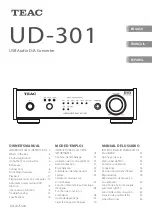
6
IM 77J01Q08-01E
8th Edition
9. MAINTENANCE
The product starts running immediately when the power is turned
on; however, it needs 10 to 15 minutes of warm-up before it
meets the specified performance.
9.1 Calibration Apparatus
• A calibrator (YOKOGAWA CA500 or equivalent)
•
A precision resistor of 250 Ω ±0.01%, 1W
• Setting tool for adjustment (Refer to "4.2 Connector for
Communication" in this manual.)
9.2 Calibration Procedure
1.
Connect the instruments as shown below. First adjust the
output-1 signal and then the output-2 signal.
10
11
3 2 1
4
5
6
7
8
9
Power supply
11
10
8
L
+
N
–
GND
3
4
+
–
Input
Calibrator
Calibrator
2
5
Output-2
R
+
–
Calibrator
2
5
Alarm-1
ALM1
(N.O.)
(N.O.)
COM
+
–
Calibrator
6
5
Alarm-2
ALM2
COM
+
–
Calibrator
7
9
Output-1
R
+
–
R: For current output using 250 Ω
precision resistor
2. Use the calibrator and apply input signals equivalent to 0, 25,
50, 75, and 100% of the input span to the product.
3. Check to see the corresponding output voltages are 0, 25, 50,
75, and 100% respectively and within the specified accuracy
rating. (“R” is used for current output.)
For alarm output, check the relay action by the alarm indicator
lamp or resistance of output terminals.
• When adjusting the output signal, use the VJ77 parameter
setting tool.
For adjustment using a setting tool, refer to the User’s Manual for
setting tool and “8. LIST OF PARAMETERS” in this manual.
User’s Manual for VJ77 [Document No.: IM 77J01J77-01E]
10. SAFETY AND EMC STANDARDS
The following will be acquired.
Safety:
IEC/EN 61010-1 compliance (CE)
IEC/EN 61010-2-030 compliance (CE)
CAN/CSA-C22.2 No.61010-1 (CSA)
CAN/CSA-C22.2 No.61010-2-030 (CSA)
UL61010-1 (CSA NRTL/C)
UL61010-2-030 (CSA NRTL/C)
Overvoltage category: II
Pollution degree: 2
Measurement category: O (other)
Rated power supply voltage: 15-30VDC( ± 10% ) 3.7 W
100-240VAC/DC( ± 10% )
50/60 Hz 3.7 W 9.2 VA
Rated voltage (Input signal) : 50 V DC
Rated voltage (Analog output signal): −10 to +10 V DC,
0 to 20 mA DC
Rated voltage (Alarm output signal) : 30 V DC 1A
Rated voltage (Communication output signal) : 5 V DC
Rated transient overvoltage: 1500 V (*)
* This is a reference safety standard value for the
measurement Category O. This value is not necessarily
a guarantee of instrument performance.
CAUTION
This instrument is for Measurement Category O
(other). Do not use it for measurements in locations
falling under Measurement Categories II, III, and IV.
Internal Wiring
Outlet
Entrance
Cable
III
T
O
II
IV
Measurement
category
Description
Remarks
O
(other) For measurements
performed on circuits not
directly connected to MAINS.
II
CAT.II For measurements
performed on circuits directly
connected to the low-voltage
installation.
Appliances,
portable
equipments,
etc.
III
CAT.III For measurements
performed in the building
installation.
Distribution
board, circuit
breaker, etc.
IV
CAT.IV For measurements
performed at the source of
the low-voltage installation.
Overhead
wire, cable
systems, etc.
EMC standards:
•
CE:
EN 61326-1 Class A, Table 2
EN 61326-2-3
* The instrument continues to operate at a measurement
accuracy of within ±20% of the range during testing.
EN 55011 Class A, Group 1
EN 61000-3-2
EN 61000-3-3
•
RCM:
EN 55011 Class A, Group 1
•
KC:
Electromagnetic wave interference prevention standard,
electromagnetic wave protection standard
CAUTION
Caution to comply with EMC standards: When
operating this instrument by external power supply,
use an independent power unit conforming to CE-
marking. Be sure to use the lightning arrester to
comply EMC standards.
Note: When option code /C0 or /FB is specified, the
conformity to the safety and EMC standards is
excluded.
11. ENVIRONMENT STANDARD
EU RoHS directive: EN IEC 63000
(However, when option code /C0 or /FB is specified, CE mark
-
ing is not applicable because the product does not comply
with the Safety and EMC standards.)
12. TRANSPORT AND STORAGE CONDITIONS
•
Temperature: −25 to 70°C
•
Temperature change rate: 20°C per hour or less
•
Humidity: 5 to 95%RH (no condensation)
CAUTION
Keep this product in a conductive bag when plugged
out, during transport or storage.
























